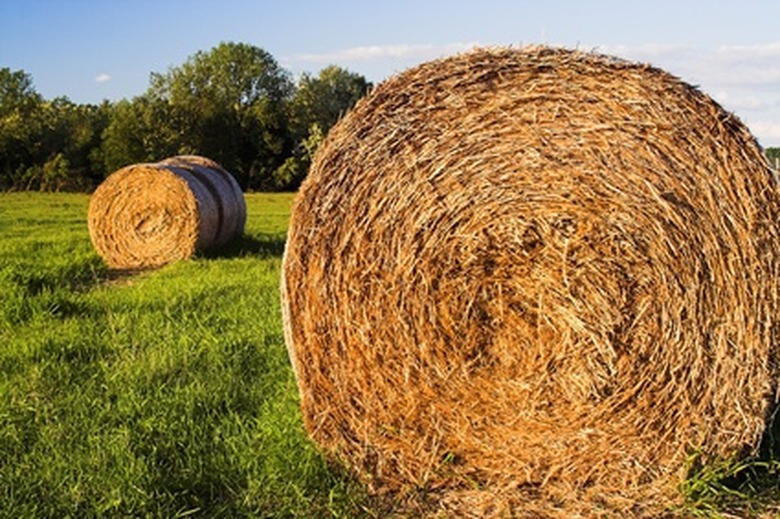History Of Balers
Before the advent of hay balers to bale hay for feed, haying was an arduous process that used scythes and pitchforks. Horse-drawn sickle mowers helped alleviated the work by cutting the crop, after which workers piled the hay into house-shaped haystacks. Stationary balers were the next evolution in haying, although modern baling did not begin until the 1940s.
Stationary Balers
Stationary balers, introduced around the mid-1800s, were horse-powered units that required workers to pitch hay into the baler and tie the compressed hay into bales. The balers were later put on wheels so they could be taken to the hay, but the process still required a man to drive the tractor, a baler operator to push hay into the bale chamber and a couple of workers to tie the bales.
Square Balers
In 1936, a man known as "Innes" of Davenport, Iowa pioneered an automatic, self-tying baler. Ed Nolt of Pennsylvania built on this innovation in 1937 by using knotters from the Innes baler to build the first successful automatic pickup square baler. New Holland began to market this design in 1940, with great success. With these devices, a single farmer could bale 35 to 40 tons of hay per day.
- Before the advent of hay balers to bale hay for feed, haying was an arduous process that used scythes and pitchforks.
- Stationary balers, introduced around the mid-1800s, were horse-powered units that required workers to pitch hay into the baler and tie the compressed hay into bales.
Round Balers
Nebraskan Ummo F. Leubben invented the first modern baler in 1903 and patented it in 1910. Leubben's machine gathered the hay, rolled it into a large round bale, tied it and ejected it from the machine. In 1940 he sold the rights to Allis-Chalmers, which adapted his ideas to develop its Roto-Baler, released in 1947. Within three years the company had sold 23,000 Roto-Balers.
